The saying “April showers bring May flowers” certainly rings true this year. After several days of rain followed by 70 degree weather, spring flowers are popping open everywhere including wildflowers.
Depending on the location, some of the following wildflowers may already be blooming or will be blooming soon.
Small-flowered woodland star (Lithophragma parviflorum)
These small, white to pink flowers grace grasslands and open ponderosa pine and Douglas-fir forests. Not only are the flowers small but the plant is usually between three and 12 inches tall.
The flowers somewhat resemble a star with the petals divided into three lobes at the tips. Flowers grow in clusters of five to 11 at the tip of the stem. Most of the leaves are clustered at the base of the purplish-colored stalk and possess deep clefts and divided blades.
The slender woodland star (L. tenellum) is similar but has a green stalk.
Shooting star (Genus Dodecatheon)
Instead of the night sky, look in moist open meadows for these shooting stars.
The arrangement of the petals give this wildflower its name. The bright purple to lavender petals are turned backwards and stream behind the yellow-to-orange style and anthers like the tail of a shooting star.
The leafless flowering stalk stands between two to ten inches tall with lance- to spatula-shaped leaves at the base. One to several flowers droop from the top of the stalk.
If the shooting star looks familiar, it is closely related to the cultivated, potted cyclamen seen in floral shops.
Arrowleaf balsamroot (Balsamorhiza sagittata)
The arrowleaf balsamroot is the showy sunflower on dry, open hillsides. The bright yellow, four-inch flowers bloom early on warm, dry hillsides and are large enough (up to three feet tall) to be seen from a distance.
The balsam pitch aroma given off by the woody taproot gives rise to the flower’s name as do the large arrow-shaped leaves.
As a member of the sunflower family (Asteraceae), the arrowleaf balsamroot has composite-type flowers. Composite flowers are often mistaken for a single large flower but they are made up of many flowers of one or two types–ray flowers and disk (disc) flowers. Ray flowers have strap-like petals and look like the petals of simple flowers. Ray flowers form the outside ‘petals’ on arrowleaf balsamroot. Disk flowers have tubular petals and on arrowleaf balsamroot form the flower head’s eye (middle).
Other flowers of the sunflower family include hawkweed, dandelions, yarrow, daises, asters, goldenrod, thistles, knapweed, pineapple weed and burdock.
Heartleaf arnica (Arnica cordifolia)
Another sunflower of the woods is the heartleaf arnica. Smaller than the arrow-leaved balsamroot, the heartleaf arnica is six to 24 inches tall.
The heart-shaped leaves lend the flower its name. The leaves are opposite each other up the stem which is unusual in the sunflower family.
Both ray and disk flowers compose the yellow flowers which have an aromatic odor. The wildflowers grow singly or in clusters from rhizomes (creeping underground stems that give rise to aerial shoots) in lightly-shaded wooded areas.
Blue clematis (Clematis occidentalis)
You’ll most likely first see blue clematis at eye-level rather than on the ground. Solitary blue to light-purple flowers grow along a climbing or trailing vine that reaches up to 15 feet long. The leaves are clustered in leaflets of three along the vine.
A unique aspect of blue clematis is that it has no petals. The blue flowers are actually four sepals (modified leaves that are usually green).
Look for blue clematis in both moist and dry sites in open woods, rocky open areas or in mixed deciduous and coniferous forests.

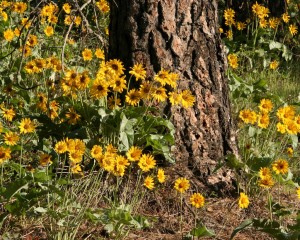
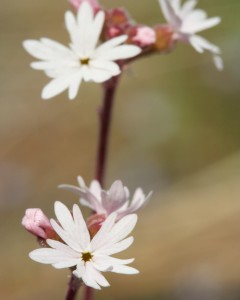
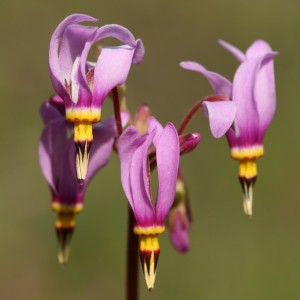
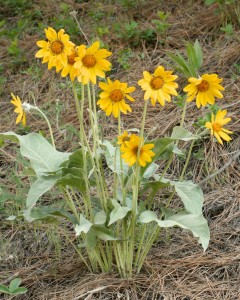
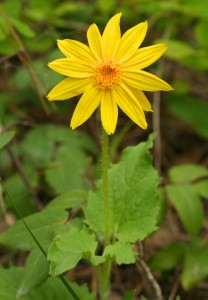
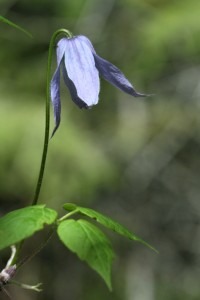
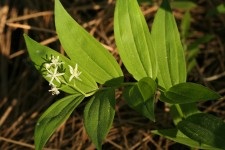
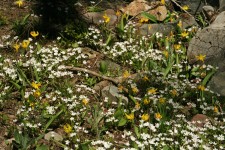
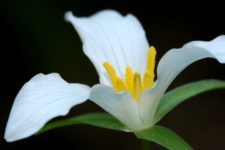

wonderful post, very informative. I’m wondering why the other experts of this
sector do not realize this. You should proceed your writing.
I’m confident, you have a great readers’ base already!
Hi, just wanted to say, I liked this article. It was helpful.
Keep on posting!
I am interested in finding someone who will do a wild herb walk with me. I live in Coeur d’ Alene and I am very much interested in finding where to harvest wild Heartleaf Arnica.
The Kinnikinnick Native Plant Society based in Sandpoint or the Idaho Native Plant Society Calypso Chapter in Coeur d’Alene might be helpful.